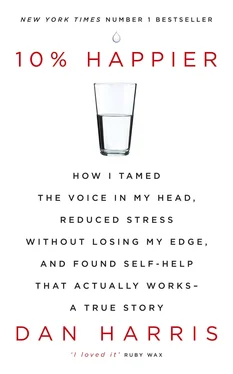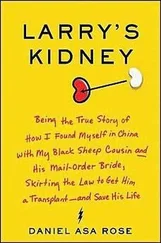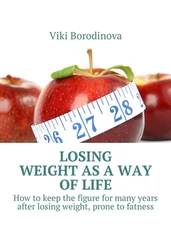Dan Harris - 10% Happier - How I Tamed the Voice in My Head, Reduced Stress Without Losing My Edge, and Found Self-Help That Actually Works—A True Story
Здесь есть возможность читать онлайн «Dan Harris - 10% Happier - How I Tamed the Voice in My Head, Reduced Stress Without Losing My Edge, and Found Self-Help That Actually Works—A True Story» весь текст электронной книги совершенно бесплатно (целиком полную версию без сокращений). В некоторых случаях можно слушать аудио, скачать через торрент в формате fb2 и присутствует краткое содержание. Год выпуска: 2014, ISBN: 2014, Издательство: Hodder & Stoughton, Жанр: Самосовершенствование, на английском языке. Описание произведения, (предисловие) а так же отзывы посетителей доступны на портале библиотеки ЛибКат.
- Название:10% Happier: How I Tamed the Voice in My Head, Reduced Stress Without Losing My Edge, and Found Self-Help That Actually Works—A True Story
- Автор:
- Издательство:Hodder & Stoughton
- Жанр:
- Год:2014
- ISBN:978 1 444 79906 4
- Рейтинг книги:5 / 5. Голосов: 1
-
Избранное:Добавить в избранное
- Отзывы:
-
Ваша оценка:
10% Happier: How I Tamed the Voice in My Head, Reduced Stress Without Losing My Edge, and Found Self-Help That Actually Works—A True Story: краткое содержание, описание и аннотация
Предлагаем к чтению аннотацию, описание, краткое содержание или предисловие (зависит от того, что написал сам автор книги «10% Happier: How I Tamed the Voice in My Head, Reduced Stress Without Losing My Edge, and Found Self-Help That Actually Works—A True Story»). Если вы не нашли необходимую информацию о книге — напишите в комментариях, мы постараемся отыскать её.
‘With startling, provocative, and often very funny candour, Dan Harris tells the story of why he urgently needed to tame the strident voice in his head, and how he did it. His argument for the power of mindfulness–which he bases both on cutting-edge science and his own hard-won experience–will convince even the most sceptical reader of meditation’s potential.’ Gretchen Rubin, author of ‘In
, Dan Harris describes in fascinating detail the stresses of working as a news correspondent and the relief he has found through the practice of meditation. This is an extremely brave, funny, and insightful book. Every ambitious person should read it.’ Sam Harris, author of ‘A compellingly honest, delightfully interesting, and at times heartwarming story of one highly intelligent man’s life-changing journey toward a deeper understanding of what makes us our very best selves.’ Chade-Meng Tan, author of ‘Too many mainstreamers write books about meditation and miss the point—productivity, efficiency, and getting an edge mean nothing without compassion. But this brilliant, humble, funny story shows how one man found a way to navigate the nonstop stresses and demands on modern life and back to humanity by finally learning to sit around and do nothing.’ Colin Beavan, author of ‘A spiritual adventure from a master storyteller. Mindfulness can make you happier. Read this to find out how.’ George Stephanopoulos
‘The science supporting the health benefits of meditation continues to grow as does the number of Americans who count themselves as practitioners but, it took reading
to make me actually want to give it a try. Dan Harris takes the mystical mantle off meditation and shows how easy it can be to incorporate into your life. Painfully candid, outrageously funny, and definitely enlightening, Harris’s book left me feeling much more than 10% happier.‘ Richard E. Besser, M.D.—Chief Health and Medical Editor, ABC News
‘Part-science, part-memoir, and part self-help, Harris outlines specific ways he learned to, well, chill the f**k out.’












